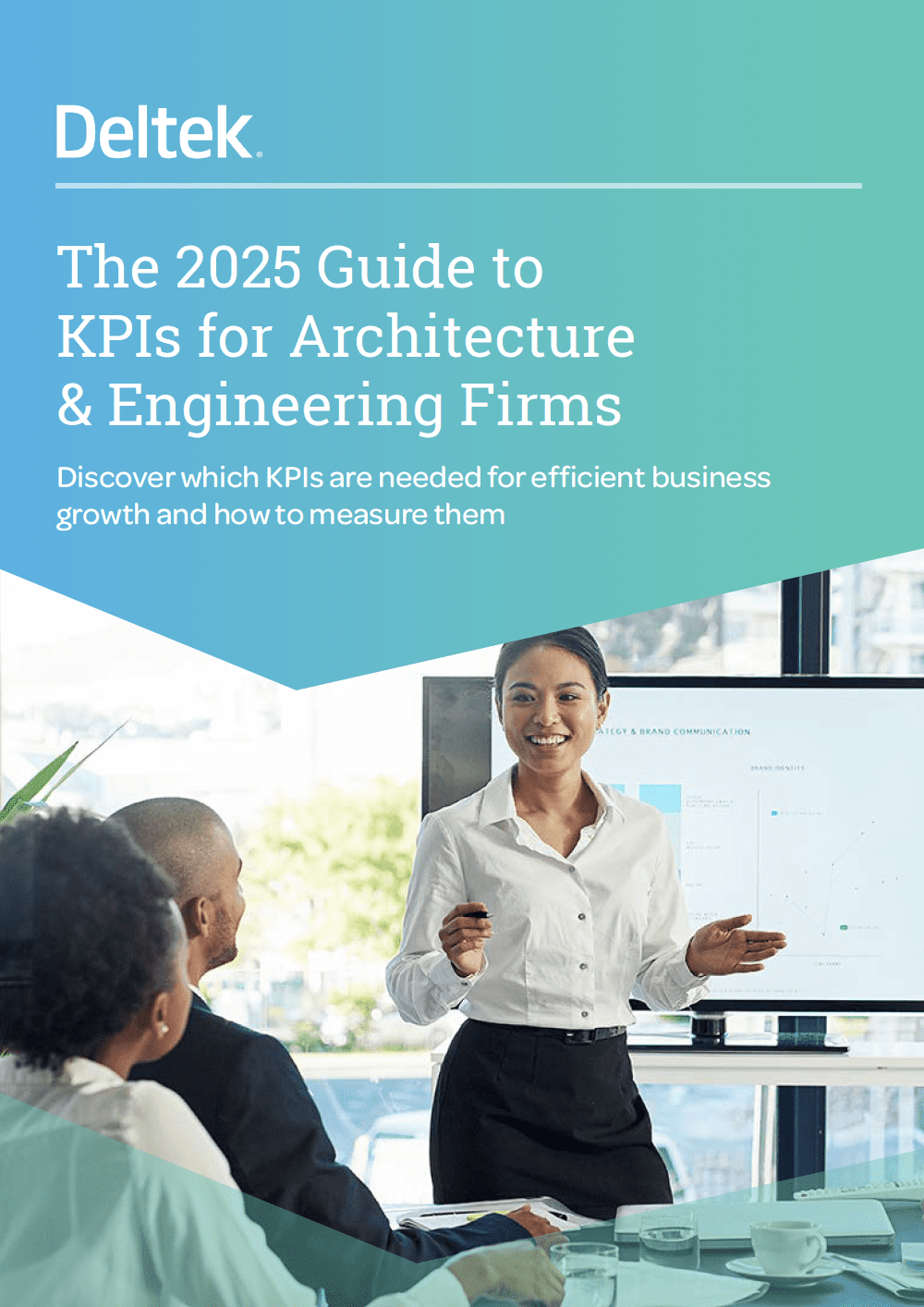Are you looking for a way to track and optimise your architecture or engineering firm’s performance? Do you want to know which key performance indicators (KPIs) are most relevant and useful for your business? Do you need a practical guide on how to set, measure and improve your KPIs?
Download the 2025 KPI Handbook for Architecture and Engineering Firms to get answers to these questions and more!
As an architecture or engineering (A&E) firm, you already understand the importance of
monitoring the key performance indicators (KPIs) relating to your employees and their job
roles. However, it is just as important to monitor relevant business and project KPIs so that you have a 360-degree view of performance at the organisational and project levels.
This guide covers the top KPIs you should be measuring – as identified in the 5th Annual
Deltek UK and ANZ Deltek Clarity Study. These include KPIs for monitoring growth and
financial performance, project delivery and human capital management. Monitoring these
KPIs will enable you to accurately assess the performance of your business, people
and projects.
KPIs for measuring business growth and profitability
The A&E firms that we surveyed confirmed that business growth and profitability are a focus for them, and they were considering several different strategies to help
them meet their objectives:
- 94% of firms were planning to change their strategy around who/what businesses they work for in 2024.
- Firms planned to focus on controlling the ever-increasing cost of running their business to protect their profit margins:
» Reducing expenses (33%)
» Increasing control of costs – purchases and approvals (28%)
» Ensuring people register hours on time (27%)
To meet your growth and profitability objectives and goals, it’s important to know what success looks like and whether you are making the right level of progress. We’ve
identified several KPIs you can monitor to track your progress in this area.
KPIs to monitor successful project delivery
According to the 2024 SPI Professional Services Maturity Benchmark Report, on-time project delivery decreased from 76.2% in 2022 to 75.7% in 2023. This isn’t a
big drop, but it’s a potential trend that A&E firms need to manage and reverse before it starts to have a real impact on their profitability, reputation, client retention andproject win rates.
When it comes to day-to-day project management best practices, the expectations of what constitutes a successful project haven’t changed. Projects need to be delivered on time and within budget and scope to ensure a healthy cash flow, customer satisfaction, repeat business and an excellent reputation in your industry.
There are some key KPIs your firm should be measuring that specifically focus on the success of your project delivery, such as project overrun, projects on schedule and
effective billing rate.
KPIs for talent acquisition and retention
Talent management is a hot topic for A&E firms. In fact, 28% of architecture and engineering firms surveyed for the 5th Annual UK and ANZ Deltek Clarity Report confirmed that attracting and retaining talent is one of their top priorities.
Over half (57%) of firms are also planning to grow their team in 2024. To do this, they need a robust strategy to attract and retain talent across the business and monitor progress towards their goals.
There were several talent management challenges identified by the A&E firms we surveyed that need to be considered when identifying and tracking relevant KPIs:
- Difficulty in attracting and retaining talent (45%)
- Lack of work/life balance (41%)
- Lack of employee engagement (40%)
- Resignations/employee churn (37%)
If you have plans in place to improve how your firm attracts and retains talent, there are some key KPIs that you can measure to ensure that you are on track to meet your staffing and resourcing of architecture and goals.
Get started with measuring your KPIs
A project-based enterprise resource planning (ERP) solution is the most efficient way for architecture and engineering firms to monitor and report on their KPIs. By integrating information from all projects across the business, project-based ERP allows for full transparency and more accurate reporting, as data is drawn from one central repository.
Creating a dashboard within your project-based ERP allows you to set the amount and type of data that each person sees and in what format. This system makes your team accountable for monitoring their own KPIs, making them more effective and easier to manage.



